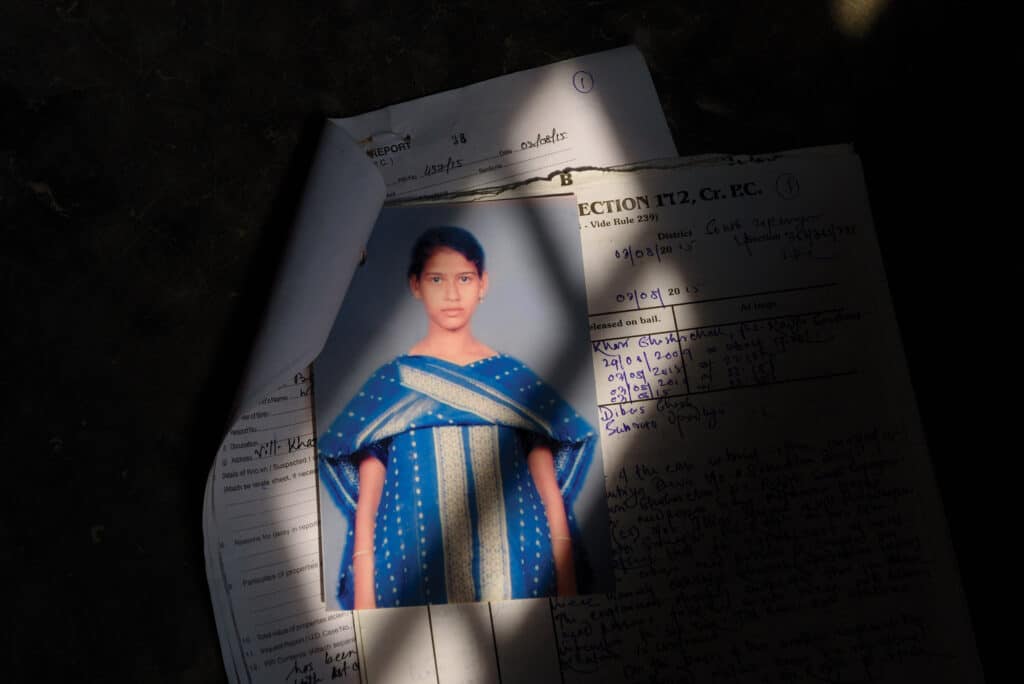In 2015 photographer Smita Sharma was working on a project entitled Not My Shame, about the issues of rape and sexual violence in her home county of India. While working in West Bengal, Sharma met a 17-year-old girl who she calls Meena. Meena had just returned home after being rescued from a brothel in Delhi. Her story became the start of what is now We Cry in Silence.
“While working on this project, I accidentally met Meena. When I realized the way she was trafficked, it was very shocking. I wondered how does this happen so easily? It was basically out of curiosity. So what I tried to do is that because I was already working on sexual violence, I had access to many lawyers who were working on cases and taking up litigation. And I also knew some of the police. So I went and approached them and asked them, are there any more missing persons cases?”
Meena had received a phone call from a young man who called himself Raj. Raj told her that she was beautiful and that he was in love with her. He suggested that they meet in person, and the young Meena, not knowing any better, readily agreed. Raj showed up well dressed, and even brought a present for Meena. He told her a tale of his sister running a successful business in Delhi over drinks and snacks. Raj’s talked of a future with abundance and safety working for his sister and wanted Meena to be part of that future. An elderly couple joined them, who Raj introduced as his parents. They fawned over Meena, saying how much they liked her and wanted her to be part of their family. Meena was overwhelmed, having never really gotten affection like this from anyone. That day she left home for Kolkata with Raj, and the next day was on a train bound for Delhi. Then she found herself in a brothel.
From testimony to testimony
The police initially would not admit to Sharma that human trafficking like this was happening. They would tell her that this was just one case, or it is just a love affair, or that she must have just run away. She also contacted some NGOs who were working with anti-human trafficking. Some were very doubtful of Sharma approach and wanted to encroach on her work in ways that would have made it impossible.
“They were like, ‘oh, we will have a person come with you and shadow you.’ And basically, it was very difficult. And then I had to explain to them that it doesn’t work like this. Photography is different. You need to trust me, otherwise I’m not going to get what I’m trying to find. So it was a struggle. Honestly, the first two years was a big struggle in terms of everything, whether it is access or whether it was people getting people’s trust. And also to find financed my project because nobody wanted to fund this.”
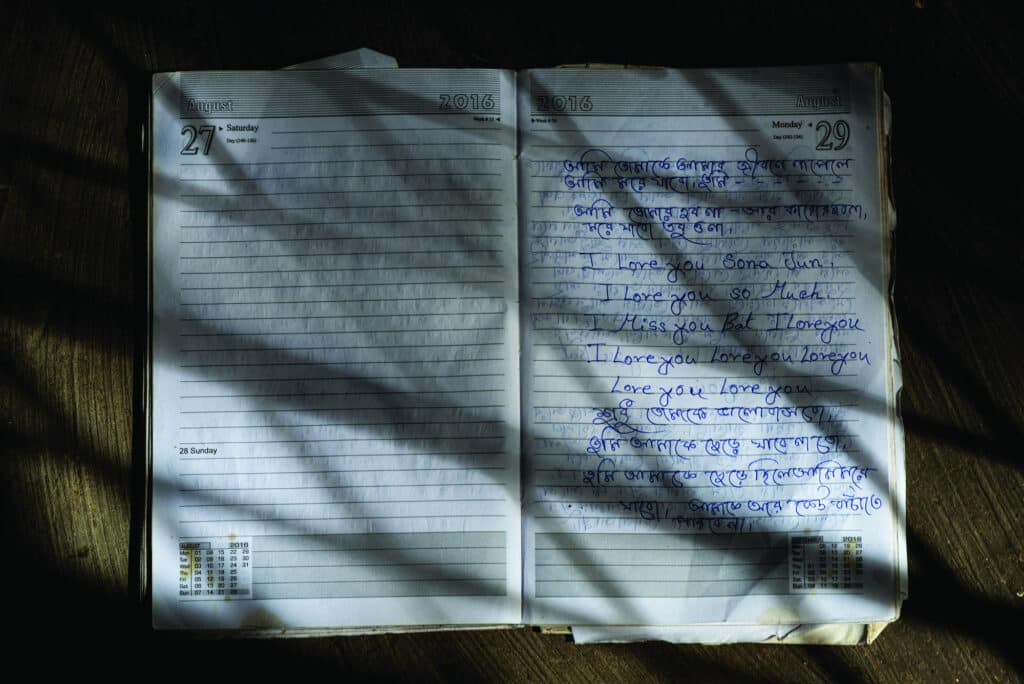
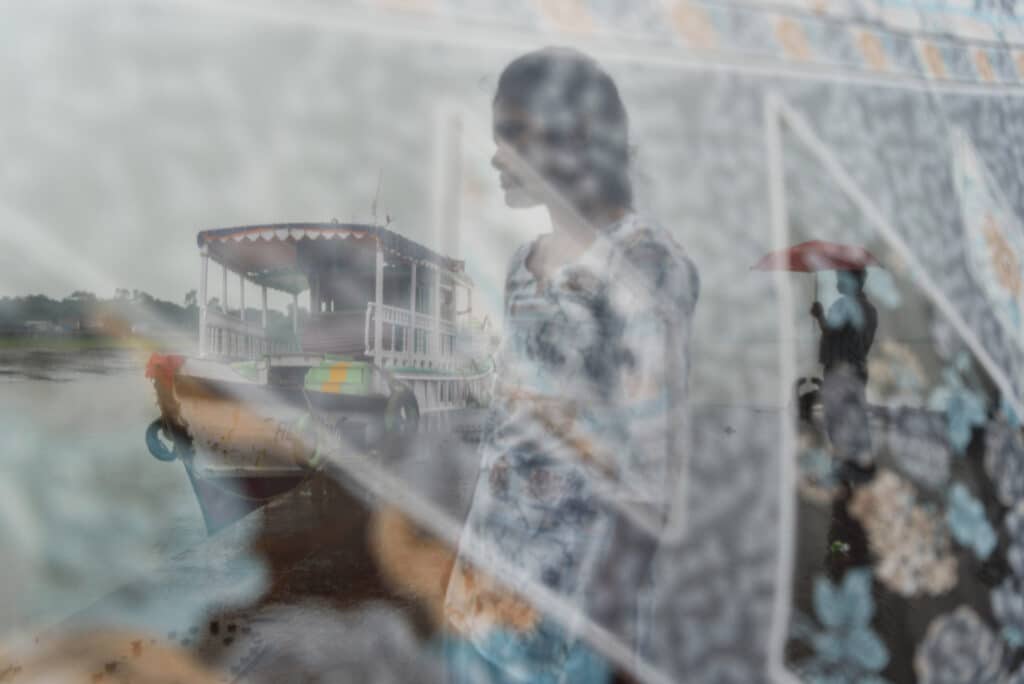
Sharma slowly but surely built up the project. As she worked, she would meet with one girl, and while speaking to her about her experience, she would hear about another girl who had also been trafficked and was now home again. So she would reach out to that other girl and her family. It was a long chain, one contact connecting her to another, then another.
In the process she also met some of the traffickers themselves. One was a father of two young girls himself, who told her that he did it for the quick money it provided. Another, whom Sharma refers to as N, is a mother of 3. N and her husband lured girls with arranged marriage proposals, who were then supposedly sold to militants in Kashmir. None every returned, and N said they had all gone willingly and because of her were living better lives.
“It’s that easy to take a girl and traffic them. They don’t have any remorse. The woman that I asked, she’s a mother, right? She has her own children. And then I asked her what if the same thing happens to your children? And she said ‘Madam, you know, the girls that I took from here, I got them married.’ She considers it marriage for her. And she said ‘All of them were starving here. They didn’t have a good life. At least they are wearing good clothes and they are eating good food. So I actually helped them.’ That was her response to me.”
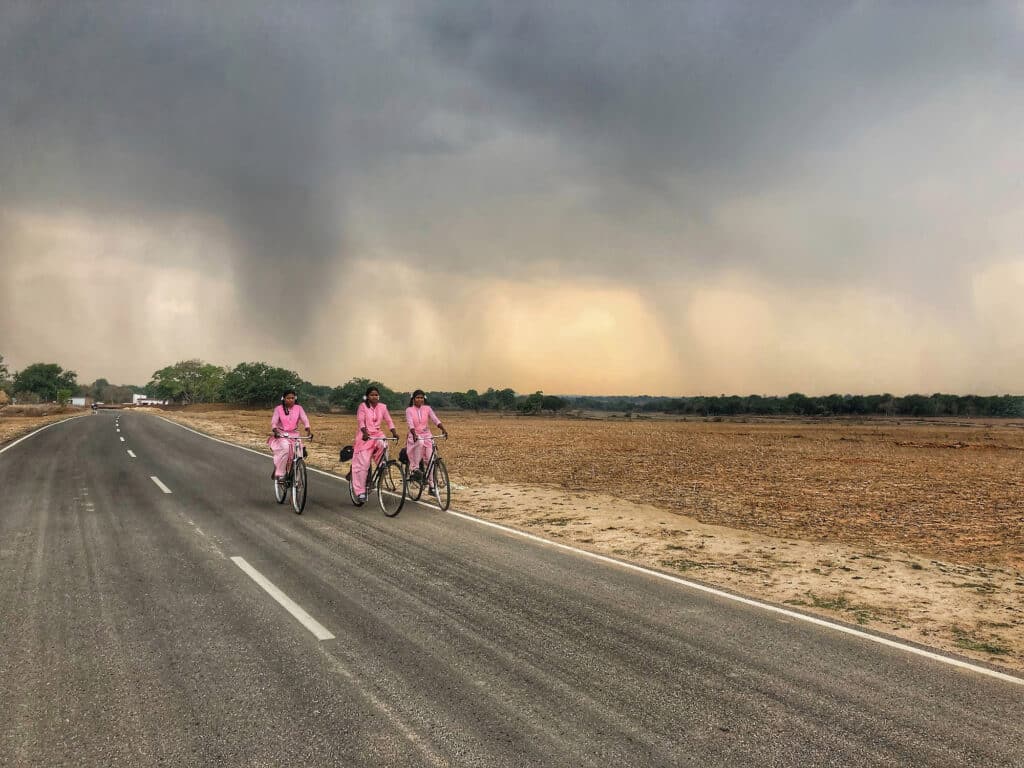
Keep a low profile
Sharma was obligated to protect the identity of the girls in her photographs, both legally and morally. And both have grave consequences. If the girls’ stories were leaked into their villages and community, their futures could be imperiled.
“There’s a lot of backlash that happens. And it’s not just the girl, it’s also her entire family. I met brothers who refused to go to school because their sisters were raped or something had happened. And everyone would humiliate this little boy. And he said, like, I’m not going to go to school because everyone makes fun of me. So it goes really deep, this kind of shame.”
Legally, there is the Protection of Children Against Sexual Offense Act, passed in India in 2012, that was created to protect children from offences of sexual assault, sexual harassment and pornography and provided special courts to deal with these issues. It works to safeguard the interest of the child at every stage of the process.
It contains strict rules about what can and can’t be published, namely around the identities of those involved. Everything had to be cleared through lawyers before it could be published to make sure that it did not go against the law. Both journalists and those who print anything that violates the law face prison time.
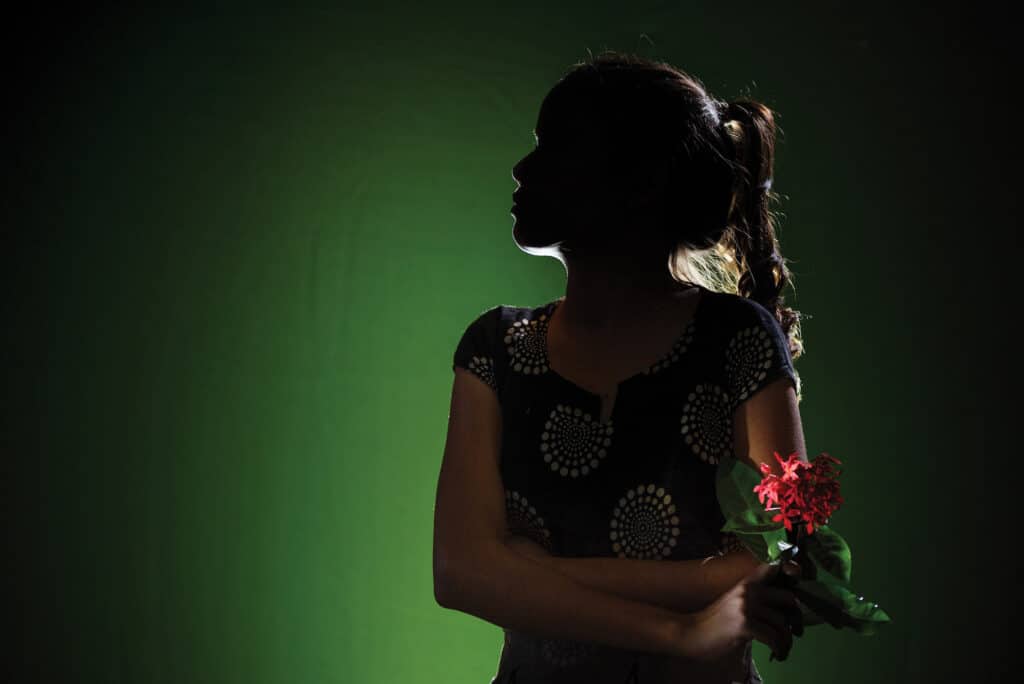
Because of these reasons Sharma also had to be careful to keep a low profile as she worked so that those who lived around the girl she was going to talk to and photograph would not know why she was really visiting.
“The parents were very cautious, especially about their neighbors, not about anyone else, because they are very scared about gossip and the word getting out and that kind of jeopardizing the girl’s future or her marriage prospects. So I had to be very careful, keep a very low profile.”
“My greatest friend is a 35mm”
When she would go to a village, and people would be curious why an outsider was there and would come to see her. Sharma would tell the people she met that she was a researcher working on issues of female hygiene and would have some sanitary pads as props. At that, the men would leave, and she would be left speaking with the women and children. She would talk with them a bit about various issues, and eventually they would all get bored and leave her alone.
“And that’s when I start my real job of going to the family that I’m actually planning to meet. But that takes care of the curiosity. So then there is no gossip about the girl or her family, and the family is also at ease.”
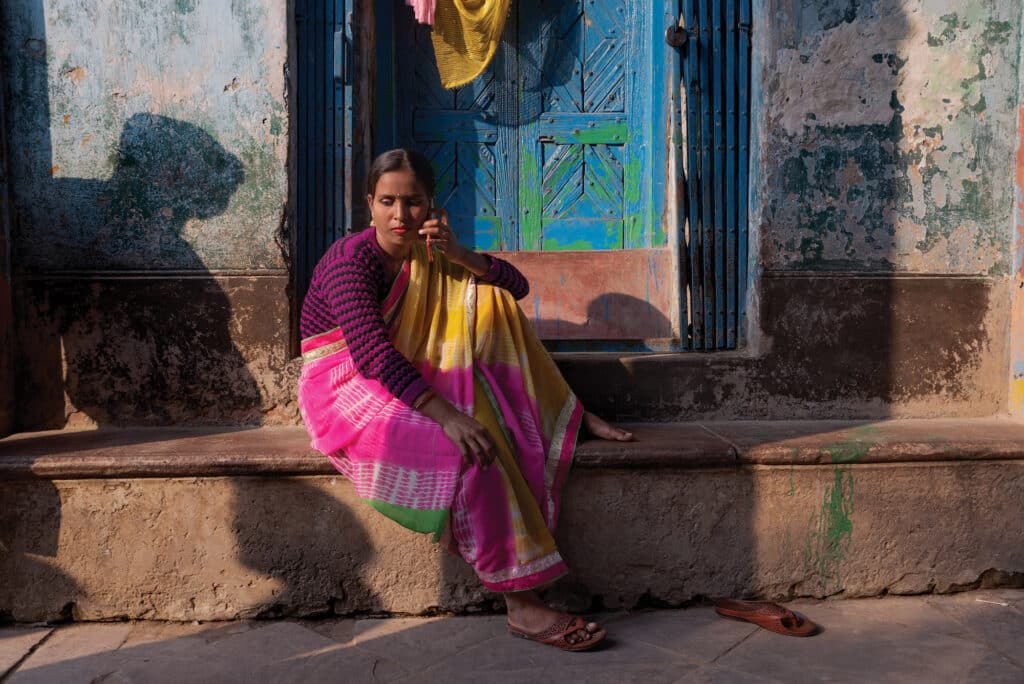
In 2018, after being commissioned by National Geographic to produce an article for the magazine on this story, eventually called Stolen Lives, Sharma also learned that she was pregnant. While there were risks involved in continuing the project while pregnant, she was determined to continue given the importance of the work and what it could mean for the lives of the girls involved.
But pregnancy also had some advantages in telling the stories. When she would meet and speak with people, it was much easier and quicker to gain their confidence. And when she worked in red-light districts later in pregnancy, she would often be helped by the sex-workers who were afraid she may slip and fall, and they would bring her tea and let her use their private bathrooms.
Actually making the photographs to tell the stories while protecting the identity of the girls themselves was equally as complicated.
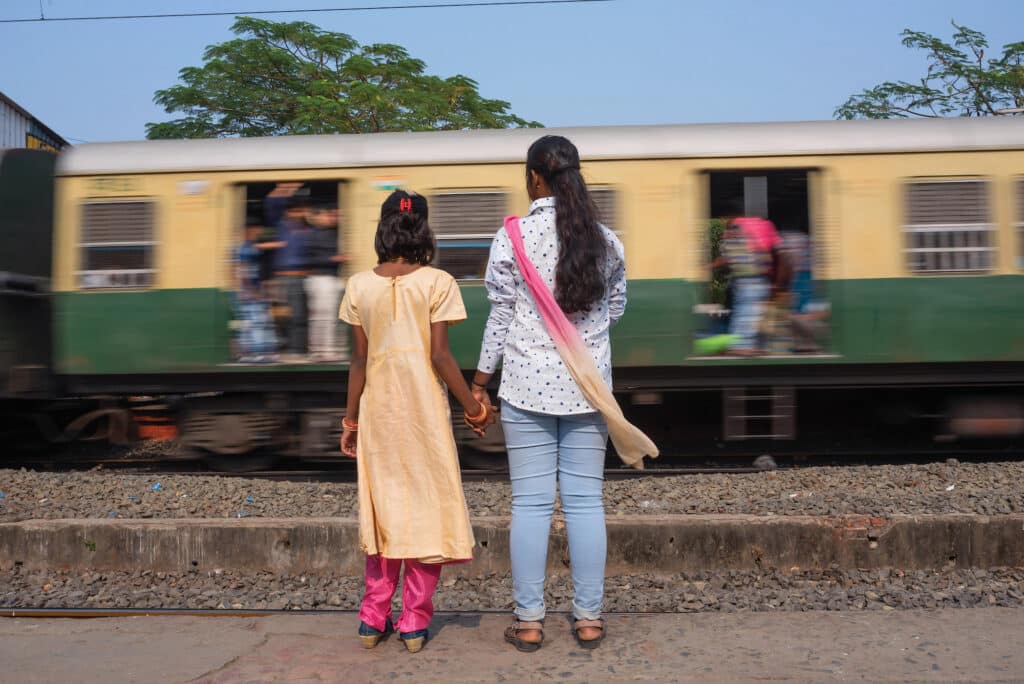
“I had to think a lot before just going click because there were so many limitations. I could not do so many things. So it was also a lot of planning and it was a lot of preparation before I actually took the shot, but it was also on the spot, trying to make the best use. Because when I go to these communities, I don’t even carry a camera bag. I cannot be seen as a photographer. I carry very minimum gear. My best friend is a 35mm camera, and I have these very tiny lights. So sometimes I look for creative ways as to how can I light, how can I use shadows to my advantage, because shadow has to be my best friend in such things….One of my teachers from ICP (the International Center of Photography) who taught me lighting always said that lighting is good to know, but the most important thing is improvisation. How do you improvise? And I think that’s the best advice that I got from him. Because all the photographs that I made, it’s all improvisation. It’s something that I used to find how do I reveal enough but not show too much.”
Documenting sexual violence
The publication of We Cry in Silence has not ended Sharma’s work on the project. While not photographing as much, she is working to organize educational campaigns in areas around India, Nepal and Bangladesh that are areas where trafficking takes place.
The We Cry In Silence campaign comprises exhibitions, community events and the distribution of a 12-page zine in Bengali, Hindi, and English. The zine includes testimonies of survivors with their images, illustrations, educational material including general safety measures, resources, and contact information for local anti-trafficking organizations. The zine is distributed free during exhibitions and community events. It aims to educate and raise awareness amongst the communities about this trafficking. This zine is part of Sharma’s effort to give back to the communities by showcasing the work with which they trusted her. But it is also an initiative to create a body of work that can work as lasting evidence.
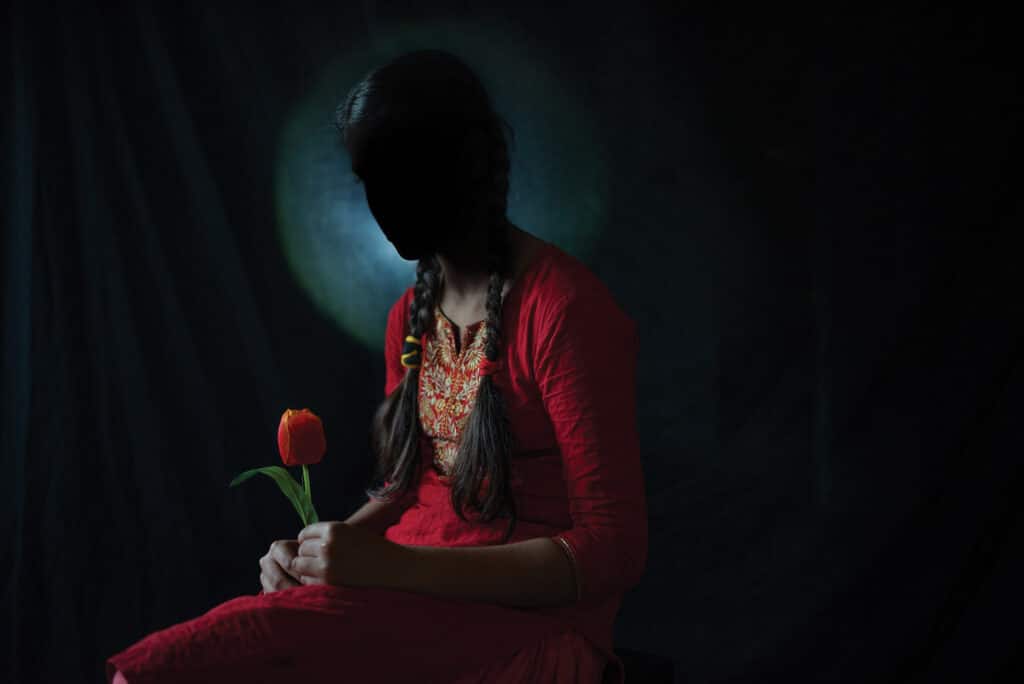
Sharma hopes that the work will bring the issues of trafficking and sexual violence out into the open and create a way for people to be open to talking about its causes and effects.
“Whenever there is any kind of conversation with people and you talk about topics like trafficking or sexual violence, people just shy away, or they just don’t know how to deal with it or talk about it. These are things which are silent issues. It keeps on happening all the time under our nose. We just don’t want to see it or we just don’t want to deal with it. And I’m not asking you to deal with it in the sense like you have to go and rescue a girl or you have to do something. But what I think is important is to at least have a conversation or at least have a little basic knowledge about these things.”
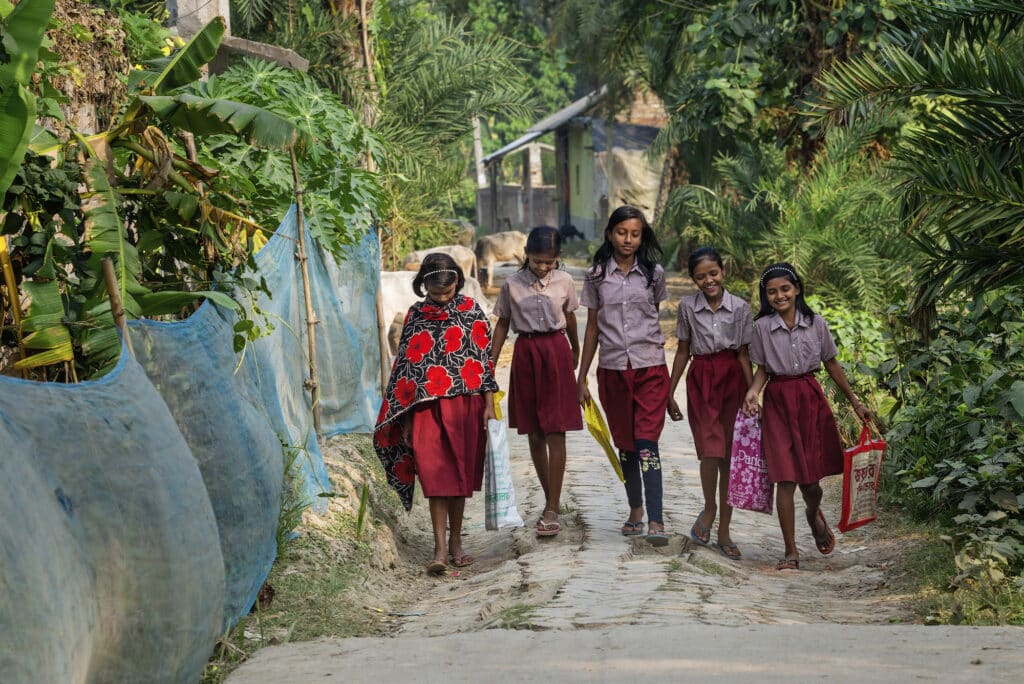
We Cry In Silence is published by PhotoEvidence and can be purchased here.
Sharma will also be presenting the work and speaking at a number of upcoming events. On February 17thshe will be at the Bronx Documentary Center in New York City. On February 21st she will be speaking at the International Center of Photography with Jim Estrin of the New York Times in New York City. And finally on February 22nd she will be doing a book signing and artists talk at Lost Origins Gallery in Washington D.C organized by WPOP.

